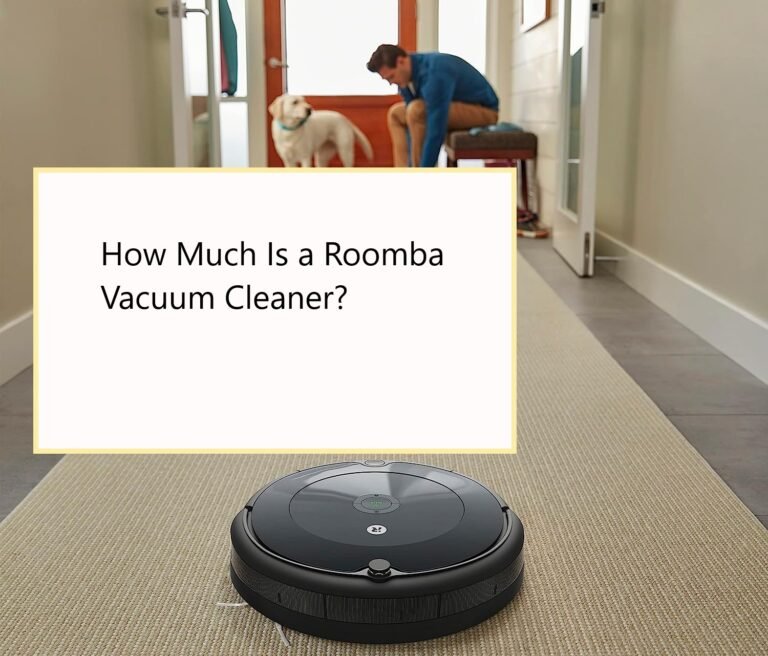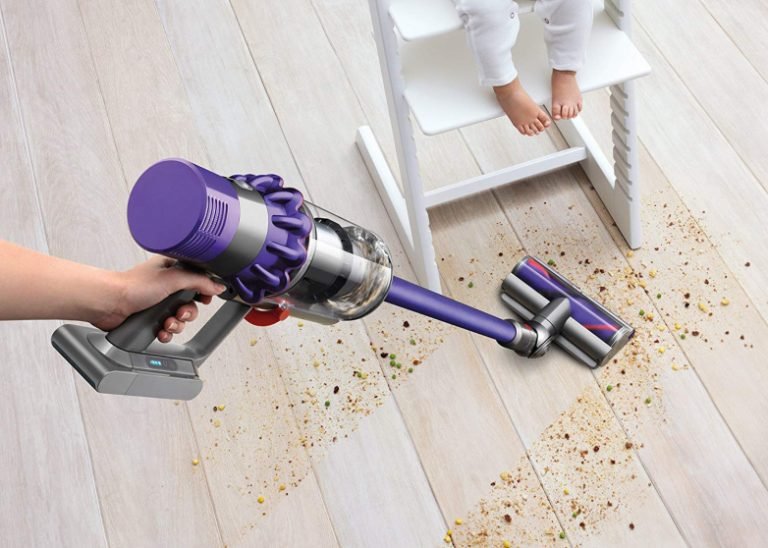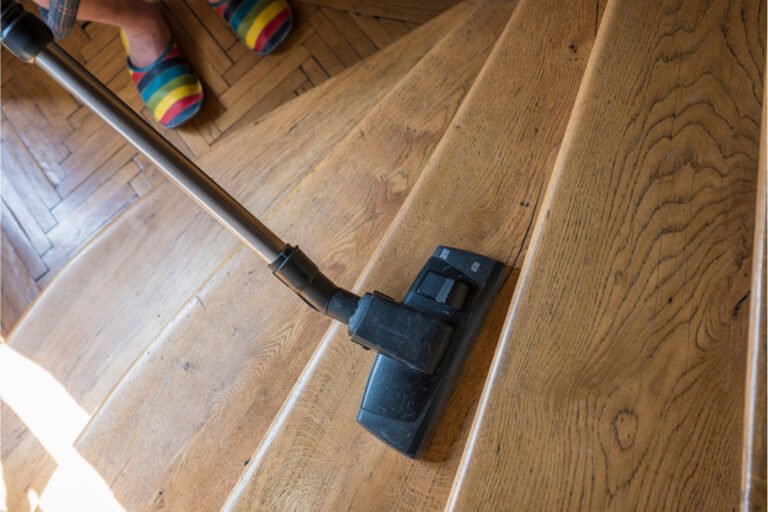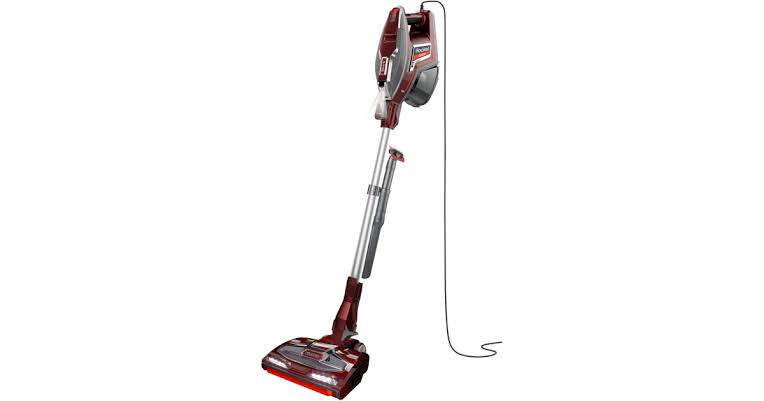Cleaning Revolution: What is A Central Vacuum System?
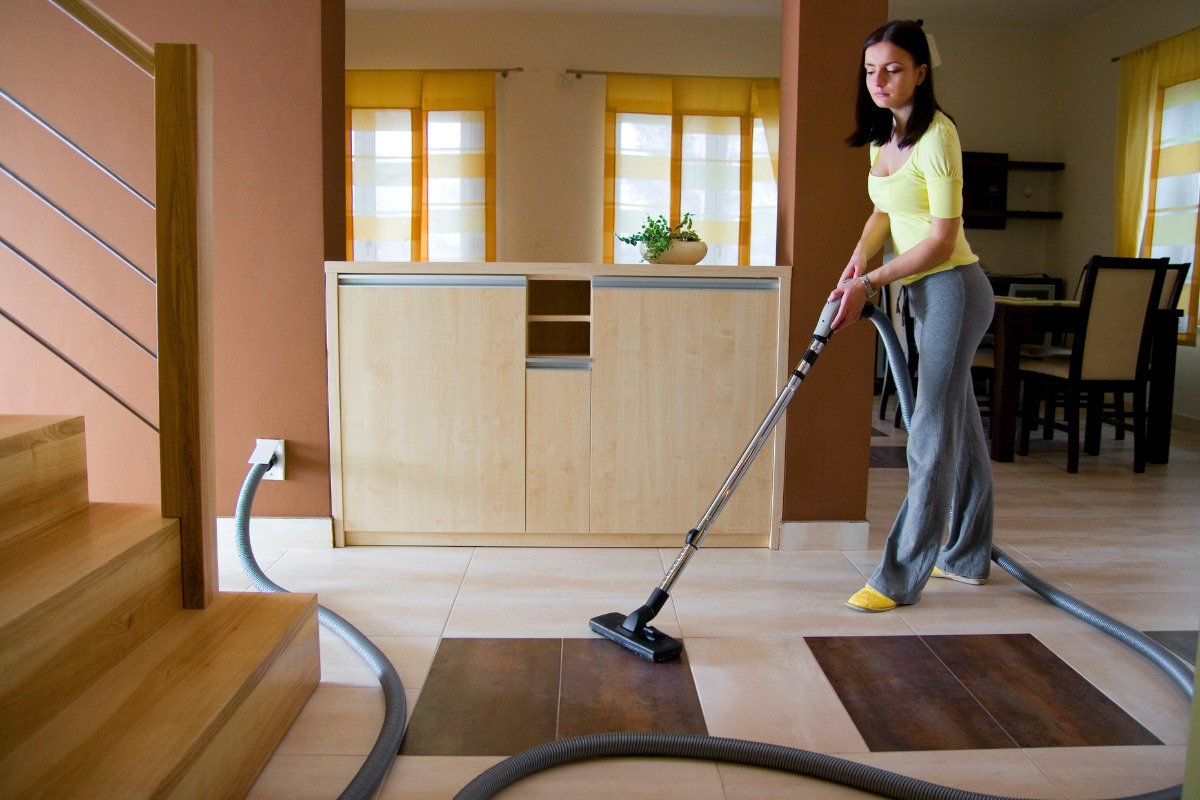
Central vacuum systems may make house cleaning easier and more efficient. So what is a central vacuum system? It is a strong built-in cleaning system with a central power unit, piping system, and home-wide intake valves.
Central vacuum systems make cleaning easier than carrying a hefty vacuum cleaner. Plug the hose into one of the intake valves throughout your house to send trash to the central power unit with a central vacuum system.
These vacuum systems increase interior air quality, noise, and cleaning efficiency. Before deciding whether a central vacuum system is ideal for your house, learn how it works and its components. The following sections will cover the advantages of central vacuum systems, installation, and maintenance.
Keep reading to learn about central vacuum systems and how they may enhance your cleaning!
Understanding Central Vacuum Systems

If you’re considering upgrading your cleaning game, it’s important to understand what central vacuum systems are and their benefits over traditional vacuum cleaners.
What are Central Vacuum Systems?
A central vacuum system is installed in your home and designed to eliminate dirt, dust, and debris from your living space more efficiently and effectively. Central vacuum systems comprise a power unit in a garage or basement, pipes running throughout your home’s walls, and inlet valves installed throughout your home.
Benefits of Central Vacuum Systems

If you’re looking for a cleaning solution that offers more than just basic cleaning, central vacuum systems are an excellent investment. Here are some of the benefits you can enjoy:
✔Improved Indoor Air Quality
Central vacuum systems help remove dust, dirt, and allergens from your home, improving indoor air quality. Unlike traditional vacuum cleaners that recirculate dust and dirt back into the air, central vacuum systems capture and remove debris through a piped network that leads to the power unit.
✔Reduced Noise Levels
Central vacuum systems are quieter than traditional vacuum cleaners. Since the main unit is away from living spaces, noise levels are considerably reduced, making cleaning easier without disturbing others in the home.
✔More Efficient Cleaning
Central vacuum systems use powerful motors and suction technology to clean your home more efficiently. The suction power is strong enough to pick up larger debris, such as pet hair and crumbs, and the long hose and attachments allow you to reach tight spaces that traditional vacuum cleaners can’t.
✔Easy to Use and Convenient
Central vacuum systems are easy to use and convenient. Since you install the power unit in a central location, you don’t have to carry a heavy vacuum cleaner around the house. Instead, you can simply plug in the hose and start cleaning.
✔Long-lasting and Low-maintenance
Central vacuum systems can last for years with minimal maintenance. Most models only require a yearly filter change and inspections of the power unit and piping system to ensure they work correctly. It means you can enjoy a cleaner home without worrying about costly repairs or frequent maintenance.
Components of a Central Vacuum System
A central vacuum system consists of different components that provide efficient cleaning. Understanding the function of each part is essential for proper maintenance and troubleshooting. Here are the main components of a central vacuum system:
👉🏻Power Unit
The power unit is the heart of the central vacuum system. It contains the motor that generates suction, the debris collection bin, and the filtration system. Install the power unit in a well-ventilated area and connect the inlet valve to a centralized piping system.
👉🏻Inlet Valves
Inlet valves are the connection points for the vacuum hose. They should be installed strategically throughout the house to ensure adequate coverage. Install the inlet valves on the floor, wall, or baseboard.
👉🏻Piping System
The piping system connects the inlet valves to the power unit. It should be made of high-quality, durable materials to prevent leaks and blockages. You can install the piping system in the walls, attic, or crawl space.
👉🏻Hoses and Attachments
The vacuum hose connects to the inlet valve, allowing you to clean different areas of the house. Hoses come in different lengths, and you can attach accessories such as dusting brushes, crevice tools, and power heads to enhance the cleaning experience.
👉🏻Filtration System
The filtration system ensures that the debris collected by the power unit does not escape into the air. It usually consists of a multi-stage filtration process that removes dust, dirt, and allergens from the air.
👉🏻Debris Collection Bin
The debris collection bin is where the dirt and debris collected by the power unit are stored. Regularly empty it to prevent clogs and maintain optimal suction power.
In summary, the components of a central vacuum system include the power unit, inlet valves, piping system, hoses and attachments, filtration system, and debris collection bin. Understanding how each component works is crucial for proper maintenance and efficient cleaning.
How Central Vacuum Systems Work
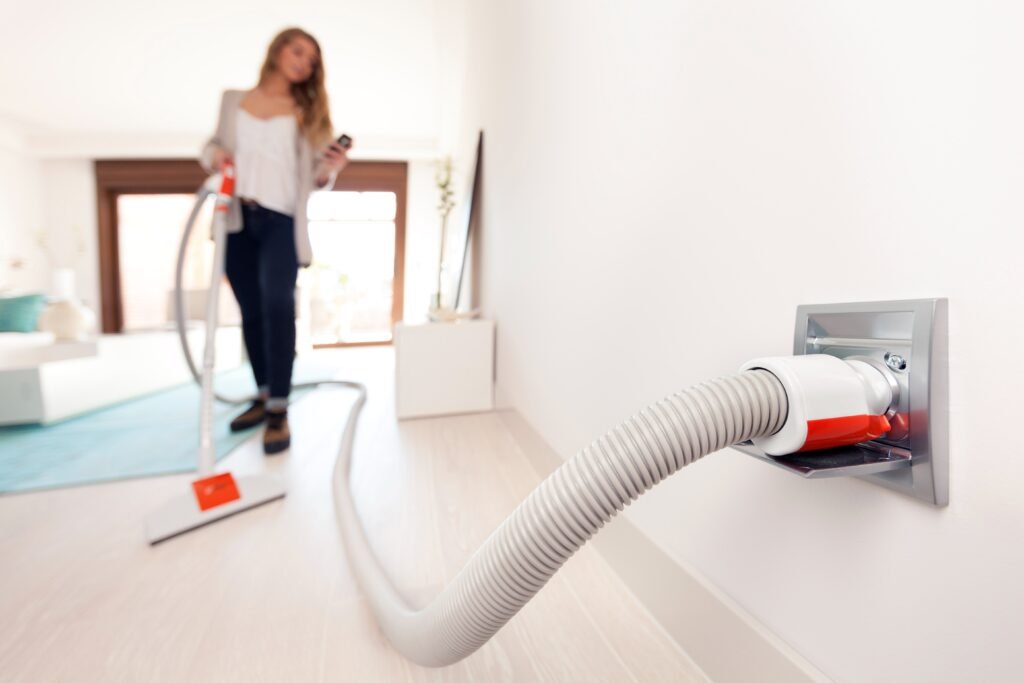
If you’re considering a central vacuum system for your home, it’s important to understand how these systems work. Central vacuum systems operate on the principle of suction power, using a powerful motor to draw in dirt and debris from the various inlet valves in your home.
✅The Components of a Central Vacuum System
A central vacuum system has several components to provide powerful and efficient cleaning. The power unit, generally installed in a garage or utility room, contains the motor and debris collection bin. PVC piping connects the power unit to the inlet valves throughout your home, typically installed in walls or baseboards. The motor is activated when you connect a hose to an inlet valve, and the suction power begins. It collects the dirt and debris in the debris collection bin for easy disposal.
✅The Suction Power
Central vacuum systems offer superior suction power thanks to their powerful motors. These systems generate more suction power than traditional vacuum cleaners, allowing you to clean more effectively and efficiently. With central vacuum systems, you’ll be able to clean your home faster with fewer passes, saving you valuable time and energy.
✅The Filtration System
Effective filtration systems in central vacuum systems reduce dust, pollen, and other air allergens, enhancing indoor air quality. These systems use filters that trap particles as small as 0.3 microns, helping to reduce allergy symptoms and providing a cleaner and healthier living environment.
✅The Debris Collection Bin
The debris collection bin in a central vacuum system is typically larger than those found in traditional vacuum cleaners, allowing you to clean more without having to stop and empty the bin. Additionally, the location of the collection bin in the power unit means you won’t have to deal with the hassle of replacing bags or cleaning filters, saving you time and money.
✅The Convenience Factor
Central vacuum systems offer unparalleled convenience when it comes to cleaning your home. With inlet valves throughout your home, you can easily connect a hose to any of them to start cleaning without lugging a heavy vacuum cleaner from room to room. Additionally, the quiet operation of central vacuum systems means you won’t have to deal with the noise and disruption of traditional vacuum cleaners.
By understanding how central vacuum systems work, you can appreciate their many advantages compared to traditional vacuum cleaners. From superior suction power to improved indoor air quality, central vacuum systems provide a cleaning solution that is fast, efficient, and convenient.
Central Vacuum System Accessories
Central vacuum systems offer a range of accessories that can enhance your cleaning experience and make it more efficient. Whether you need to clean floors, carpets, upholstery, or hard-to-reach corners, central vacuum accessories are covered.
▶Power Brush
A power brush is an excellent accessory for cleaning carpets and rugs. It features motorized bristles that agitate the carpet’s fibres, lifting dirt, dust, and pet hair. This type of accessory is particularly effective when cleaning high-traffic areas or homes with pets.
▶Crevice Tool
A crevice tool is a long, thin attachment that can reach into tight spaces between sofa cushions and baseboards and along the edges of stairs. It is useful for removing dirt, debris, and pet hair from hard-to-reach areas.
▶Upholstery Tool
An upholstery tool cleans furniture, curtains, and other soft surfaces. It features a wide brush head with gentle bristles that can loosen and remove pet hair, dust, and dirt from fabric surfaces.
▶Hardwood Floor Tool
A hardwood floor tool is a flat, wide attachment used to clean hard floors such as hardwood, tile, or laminate. It features soft bristles that pick up dirt and debris without scratching the floor. This accessory is particularly useful for homes with a lot of hard flooring.
▶Dusting Brush
A dusting brush is a versatile accessory that you can use for various cleaning tasks. Its soft bristles gently brush away dust and debris from sensitive surfaces, including picture frames, curtains, and lampshades.
Pre-Installation Considerations

Before you install a central vacuum system in your home, there are several pre-installation considerations that you should keep in mind. These considerations will ensure that your central vacuum system performs effectively and efficiently.
⭕Evaluate Space Requirements
One of the first things you need to consider is the space requirements of your central vacuum system. Determine where to install the central vacuum unit and the inlet valves. Plan the route of the piping system carefully to ensure that it doesn’t interfere with existing structures.
⭕Plan the Layout
Next, plan the layout of the piping system. Consider the placement of the inlet valves and the location of the power unit. Determine the length of piping needed and plan the routing of the pipes through your home.
⭕Ensure Proper Electrical Connections
Proper electrical connections are essential for the effective functioning of your central vacuum system. Ensure that you have an electrical outlet available in the location where you plan to install the central vacuum unit. Verify the unit’s voltage and amperage requirements and that the power source satisfies them.
⭕Choose the Right Accessories
Choosing the right accessories for your central vacuum system is crucial to ensure it performs optimally. Consider the type of flooring in your home and choose accessories accordingly. For instance, choose a power brush for carpeted floors and a hard brush for tiled floors. Your cleaning needs may involve upholstery brushes or crevice tools.
⭕Think About Future Expansion
Finally, think about future expansion. Plan for future changes in your home, such as adding new rooms or remodeling existing ones. Ensure that your central vacuum system is flexible enough to accommodate these changes. Consider leaving some extra space in the piping system to accommodate future expansion.
By considering these pre-installation considerations, you can ensure that your central vacuum system is installed effectively, performs efficiently, and meets your cleaning requirements.
How to Install Central Vacuum System
Installing a central vacuum system in your home is not as difficult as it may seem. Here are the steps you need to follow:
Step 1️⃣: Choose the Right Location
Start by selecting a location for the power unit. It should be in a dry and well-ventilated area, such as a garage or basement. Remember that the location should also be easily accessible for maintenance and repairs.
Step 2️⃣: Install the Power Unit
Mount the power unit on the wall using the mounting bracket that comes with the system. Ensure it is securely attached and at the right height for easy maintenance. Connect the power unit to the electrical source according to the manufacturer’s instructions.
Step 3️⃣: Install the Piping System
Next, install the piping system that will run throughout your home. Cut the PVC pipes to the appropriate length and connect them using fittings and adhesive. For efficient debris collection, ensure the pipes are sloped downwards towards the power unit.
Step 4️⃣: Install the Inlet Valves
Install the inlet valves at convenient locations throughout your home. These valves connect to the piping system and allow you to attach the hose when you need to use the system. Install the valves at a comfortable height for you to reach and ensure they are easily accessible.
Step 5️⃣: Connect the Piping System to the Power Unit
Connect the piping system to the power unit using the fittings and adhesive. Ensure the connection is secure and airtight to prevent any loss of suction power.
Step 6️⃣: Test the System
Test the system once the installation is complete to ensure everything works correctly. Turn on the power unit and walk around your home, checking each inlet valve to ensure the system’s suction power works correctly.
That’s it! You now have a fully functional central vacuum system installed in your home.
Central Vacuum System vs. Traditional Vacuum Cleaners

When it comes to keeping your home clean, you have multiple options. Traditional vacuum cleaners are popular, but central vacuum systems offer many advantages that may make them better for your needs.
➡Suction Power
Central vacuum systems provide powerful and consistent suction throughout your home. Unlike traditional vacuum cleaners, which can lose suction power over time as their bags fill up, central vacuum systems can maintain suction power thanks to their larger capacity and efficient design. Your carpets and floors will be healthier and cleaner after using them since they can remove dirt and debris more successfully.
➡Convenience
Central vacuum systems offer a higher level of convenience than traditional vacuum cleaners. With a central vacuum system, you don’t need to worry about lugging a heavy vacuum cleaner around your home. Instead, you can connect a lightweight hose to an inlet valve in your wall and easily clean your floors and carpets. Plus, with no cords to plug in or drag around, cleaning becomes faster and easier.
➡Maintenance
Central vacuum systems require less maintenance than traditional vacuum cleaners. With no bag to replace, you’ll save money and reduce waste over time. Additionally, central vacuum systems typically have larger filters that require less frequent cleaning, making them a more low-maintenance option for busy homeowners.
➡Noise Level
Traditional vacuum cleaners are louder than central vacuums. It is because the power unit is far from living areas, reducing noise levels and allowing you to clean your home without disturbing others.
Overall, while traditional vacuum cleaners have advantages, central vacuum systems offer a revolutionary cleaning solution that can make your life easier and your home cleaner and healthier. By choosing a central vacuum system, you can enjoy greater suction power, convenience, and lower maintenance needs, making it a valuable investment for any homeowner.
Maintenance and Care of Central Vacuum Systems
Traditional vacuums are noisier than central ones. Here are some tips to help you maintain and care for your system:
👍🏻Clean the Power Unit
Cleaning the power unit is one of your central vacuum system’s most critical maintenance tasks. You should remove the dirt canister and empty it regularly. Remove dust and grime on interior surfaces with a moist cloth. If debris builds up, clean the motor and fan blades.
👍🏻Empty the Debris Collection Bin
Central vacuum systems have a debris collection bin that you should empty after every use or when it’s full. If you don’t empty the bin, it can lead to a drop in suction power or cause clogs in the system. You should remove the bin and empty it into the trash. Also, wash the bin with soap and water to remove debris or dust buildup.
👍🏻Inspect the Piping System
Regularly check the piping system of your central vacuum system for leaks, cracks, or blockages. Inspect the pipes for any damages and repair or replace them as necessary. Use a flashlight to look inside the pipes for any debris buildup, and remove it with a pipe cleaning tool.
👍🏻Clean the Vacuum Brush and Tools
Central vacuum systems come with several tools, including a brush, crevice tool, and upholstery tool. These tools can accumulate hair, dust, and other debris, reducing effectiveness. You should clean the accessories regularly to ensure they work correctly. Remove any debris buildup with a cleaning tool or a damp cloth.
👍🏻Replace the Filters
Central vacuum systems have filters that need regular replacement to maintain optimal performance. Model and use determine filter replacement frequency. Check the manufacturer’s manual for specific maintenance instructions and recommendations on filter replacement.
Frequently Asked Questions
Q: What makes a good central vacuum?
A: A good central vacuum system typically features strong suction power, a large capacity for dust and debris, and a high-quality filtration system to prevent dust from re-entering the indoor environment. It should also be quiet, reliable, and easy to maintain. Compatibility with various attachments for different cleaning needs and a design that allows for efficient installation and use throughout the home are also important. A good central vacuum system should also have a durable construction to ensure longevity.
Q: How long does the central vacuum last?
A: A central vacuum system generally lasts between 20 to 30 years. This longevity depends on factors like the quality of the system, frequency of use, and how well it is maintained. Regular maintenance can help extend its lifespan. However, components like hoses and attachments may need replacement more frequently.
Q: When should I install my central vacuum?
A: The ideal time to install a central vacuum system is during a new home’s construction or major renovations. This timing allows for easier installation of the system’s piping and infrastructure within the walls. However, it can also be installed in an existing home, though this may require more extensive work to fit the system into the existing structure. It’s best to consult a professional to determine the feasibility and plan the installation accordingly.
Q: Where is the best place to put a central vacuum?
A: The best place to install a central vacuum unit is in a garage, basement, or utility room. These locations are ideal because they are typically out of the way, have enough space, and minimize noise in living areas. Additionally, it’s important to ensure the location allows for easy access for maintenance and is close enough to the main areas of the house for efficient piping layout, ensuring optimal suction power throughout the home.
Q: What size central vacuum do I need?
A: The size of the central vacuum system you need depends on the size of your home. Generally, homes up to 3,000 square feet require a smaller system, while larger homes, up to 5,000 square feet or more, need a more powerful unit with greater suction and capacity. It’s important to consider the layout of your home, including the number of floors and rooms, to ensure adequate coverage. Consulting with a professional can help determine the most appropriate system size for your needs.
Conclusion
While traditional vacuum cleaners have advantages, central vacuum systems offer superior suction power, convenience, and efficiency. Better indoor air quality reduces asthma, allergies, and other respiratory issues. When installing a central vacuum system, carefully considering the pre-installation requirements, such as space and electrical needs, is important. However, with the help of a professional installer, you can complete the process quickly and easily.
After installing your system, it’s important to maintain it properly by regularly cleaning the power unit and debris collection bin, inspecting the piping system, and replacing worn-out components. A central vacuum system may revolutionize your cleaning routine, keeping your house healthy for years. So why wait? Join the cleaning revolution and experience the many benefits of a central vacuum system today.

